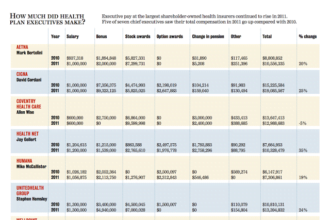 A study conducted by Dr. Eugene Schneller, Professor of Supply Chain Management at Arizona State University: ‘The Value of Group Purchasing 2009: Meeting the Needs for Strategic Savings’, reports that group purchasing saves the healthcare industry $36 billion annually.
A study conducted by Dr. Eugene Schneller, Professor of Supply Chain Management at Arizona State University: ‘The Value of Group Purchasing 2009: Meeting the Needs for Strategic Savings’, reports that group purchasing saves the healthcare industry $36 billion annually.
 A study conducted by Dr. Eugene Schneller, Professor of Supply Chain Management at Arizona State University: ‘The Value of Group Purchasing 2009: Meeting the Needs for Strategic Savings’, reports that group purchasing saves the healthcare industry $36 billion annually. For decades, hospitals have used the advantages of group purchasing to leverage their combined purchasing power to receive significant discounts and realize tremendous efficiencies and savings.
A study conducted by Dr. Eugene Schneller, Professor of Supply Chain Management at Arizona State University: ‘The Value of Group Purchasing 2009: Meeting the Needs for Strategic Savings’, reports that group purchasing saves the healthcare industry $36 billion annually. For decades, hospitals have used the advantages of group purchasing to leverage their combined purchasing power to receive significant discounts and realize tremendous efficiencies and savings.
Today, the convergence of multiple factors–advances in medical care, soaring healthcare costs, an aging population, and cuts in healthcare reimbursement– has led to the extension of this group purchasing model throughout the healthcare industry, especially orthopedics.
Here are 5 benefits of orthopedic group purchasing.
1. Cost Savings Management and Substitution Recommendations
Group purchasing membership brings with it access to a competitive and extensive portfolio of products, services, and solutions because many GPOs represent thousands healthcare professionals and facilities to offer members the benefit of economies of scale. By aggregating this purchasing power of a GPO, healthcare providers can gain:
- Balance the negotiating equation.
- Provide leverage for purchasers.
- Remove certain costs across sales and supply chains.
- Contract for the least expensive products.
GPO members receive financial benefits through upfront pricing discounts, distributed discounts and lower administrative costs and achieve substantial savings. In addition, GPOs use their knowledge and experience of the latest products and supplies, from a wide variety of vendors and service providers, to make informed recommendations about substitutions for products and services.
Use the GPO power to for specialized and service-oriented vendors to negotiate superior pricing and terms on the most common and specialty-specific products and supplies required by your practice area.
2. Order Management Program
For financial services, manufacturers, retailers, and other industries, supply chain management has emerged as a core function that requires superior connectivity and reporting capabilities. Supply chain management is also required for healthcare supply chains that can no longer rely on traditional clinical systems to manage supplies, which are not designed to optimize focus on supply management.
Relying on distributor systems for ordering products and supplies also have shortcomings and inefficiencies, such as being limited to the products and supplies offered by the distributor.
A GPO order management program comprehensive ordering and inventory management solution that works with your processes provides you the ability to manage and control the entire supply chain at the best value.
3. Local Agreements with National Manufacturers
Healthcare practitioners and facilities need to partner with GPO that understands the need for flexibility to deliver the best possible care to their clients. The GPO that you select should have a business model that makes it easy to negotiate contracts with national suppliers and manufacturers at the local level.
4. Tier Aggregation Program
Another approach that delivers value to members involves providing them access to an aggregation tiers through many of its agreements. Choose from a number of contracts with aggregation tiers that can help members save an average 8 to 12% annually, which adds to their profitability.
5. Contract management and capital acquisition support
Group purchasing membership can also provide members access to the best practices in contracting strategy and supply chain analytics. This assistance focuses on addressing the unique needs of individual professional, organizations, or a group of affiliated facilities.
GPO clout can also be used to provide support of capital acquisition and the the purchase of equipment and other assets.
Orthopedic doctors, orthopedic practices administrators, radiologists, and radiological departments can learn more about the advantages of using this leverage to negotiate substantial discounts with manufacturers, vendors and other service providers through group purchasing arrangements.
Image via http://401kcalculator.org






